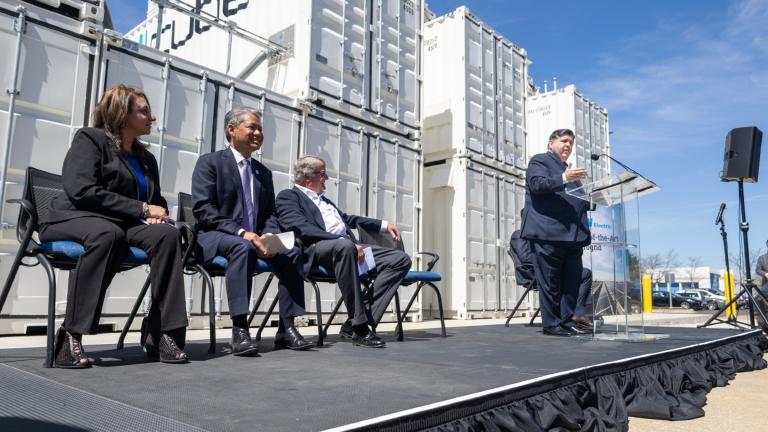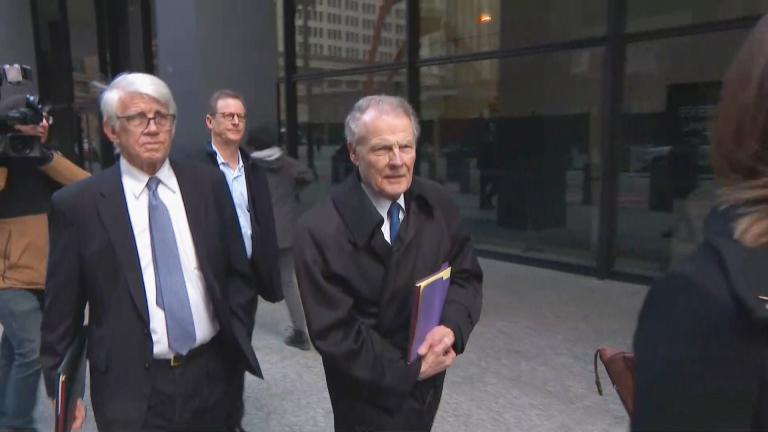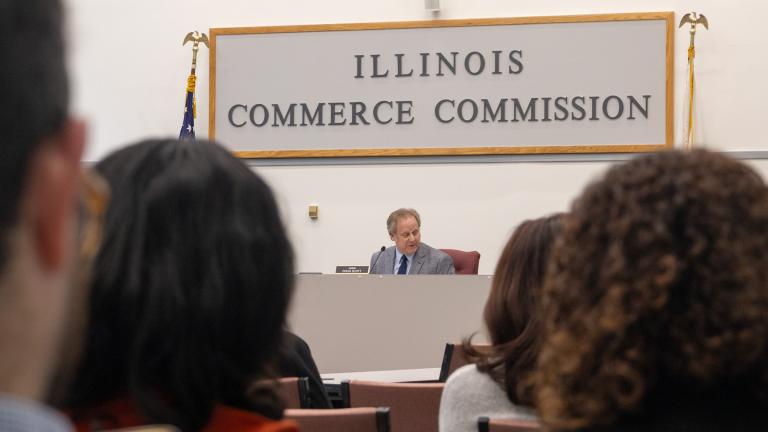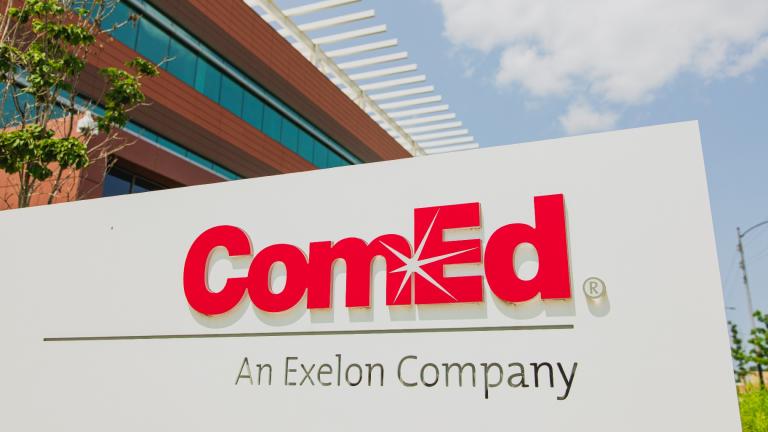Energy markets and prices are by nature mercurial.
Throw in a war, a headline-grabbing corruption case, a new law and market trends moving away from carbon-emitting energy sources and things are downright volatile.
All of that will impact what you’re set to pay this summer to turn on the lights and run the air conditioner. For residents in ComEd’s northern Illinois territory, the average electric bill will likely drop while central and southern Illinois prices are set to spike.
In Illinois, there’s an added layer of intrigue (or skepticism) about those costs given that in 2020 ComEd admitted to federal prosecutors it spent nearly a decade using bribery to get laws passed that were favorable to the utility company’s bottom line.
That includes a law that uses a formula to set rates, giving state regulators little leeway when ComEd seeks to increase the rates it charges to deliver electricity. That’s exactly what the company is seeking to do now.
ComEd in mid-April submitted a filing to the Illinois Commerce Commission (ICC) to increase rates by $199 million. ComEd’s new CEO Gil Quiniones said the money is needed for grid improvements and to help with a transition to clean energy.
“As we bring more renewable energy like wind and solar onto the power grid to support the state’s ambitious clean energy goals, we must enhance our infrastructure to safely integrate these resources and ensure the more than 9 million people we serve can continue to count on reliable and affordable energy,” Quiniones said in a press release.
Citizens Utility Board director David Kolata says there’s not much consumer advocates can do about it.
“We’re doing everything we can, we’re going to be scrutinizing this carefully,” Kolata said. “I do think it’s fair to say, though, if the past is any guide, because of this formula rate we won’t be able to zero out this rate increase.”
That’s the bad news for ComEd customers, who are also contending with energy prices inflated in large part due to Russia’s invasion of Ukraine.
But the relatively small rate hike will be washed out — and then some — by an unexpected outcome connected to those widespread higher energy prices.
“The good news is that the projections are, starting in June, that ComEd customers will see an overall bill reduction that will average about $10 a month for the typical customer,” Kolata said.
According to an Illinois Commerce Commission press release issued Wednesday, “all ComEd retail customers, including the bills of customers that do not take energy supply from ComEd, will notice a separate line item on their utility bill entitled, Carbon-Free Energy Resource Adjustment’ which will reflect the credit.”
The adjustment is a result of the wide-ranging Climate and Equitable Jobs Act that Gov. J. B. Pritzker signed into law last summer.
The act puts Illinois on the path to 100% renewable energy by 2050. Part of the law ensures that nuclear plants that had been threatening to shut down will continue to operate, by requiring consumers to pay a subsidy to keep them running.
Deputy Gov. Christian Mitchell led negotiations for the Pritzker administration.
“What we also did, was we created a hedge, so that if wholesale electricity prices spiked in a massive way there would be protection for customers in the ComEd zone,” Mitchell said. “That’s what’s happened.
Between the perfect storm of a supply crunch from COVID-19 and a war of Russian aggression in Ukraine, we’ve seen those wholesale electricity prices go up. But the good news is for families in the ComEd zone, they’re going to see more than $200 returned to them in energy credits.”
Constellation Energy (formerly Exelon Generation) in a statement said the projected $1 billion going to customers “demonstrates the critical role nuclear power plays in providing clean, resilient and reliable energy, while keeping electricity costs affordable for customers.”
Put another way: Nuclear plants lobbied lawmakers for the customer-paid subsidy because they said they needed guaranteed minimums to be profitable; with high wholesale energy prices, they’re making more than energy such that a provision of the law has kicked in that nulls the subsidies and reduces consumers’ bills. If wholesale electricity prices dip, consumers would again be on the hook for paying the subsidy.
It’s a different story downstate, where Ameren delivers electricity on a totally different multi-state grid, the Midcontinent Independent System Operator (MISO).
Kolata says central and southern Illinois residents and businesses will this summer face a whammy on several fronts.
MISO earlier this month warned of “increased risk of temporary, controlled outage” — brownouts.
Ameren opted out of the nuclear subsidy/carbon mitigation program, so consumers in its service area won’t get the rebate even as they’re contending with both overall high energy prices and high “capacity” prices, a cost that ensures there’s enough energy capacity at times of peak demand, such as hot summer days.
“It’s gonna be bad, it’s going to be very bad,” Kolata said.
CUB has not “done the math completely” but Kolata said the estimate is that Ameren consumers could be on the hook for around $40 more a month, or an extra $500 a year.
“It’s very, very significant,” he said.
Energy matters are an issue in the governor’s race.
The Public Interest Research Group, Illinois PIRG, said Illinois lawmakers erred with CEJA by not erasing the formula rates ComEd is again using to push through the $199 million delivery rate increase.
“As the cost of energy rises and consumers deal with the worst inflation in decades, ComEd is rewarding itself with rate hikes and massive profits off of its unaccountable spending,” said Illinois PIRG director Abe Scarr in an April 15 statement. “Unfortunately, the Illinois General Assembly whiffed when it had the chance to pass meaningful utility reform in 2021.”
Meanwhile, Republicans accuse Pritzker of contributing to the spike in costs via CEJA giving gas-and-coal-powered plants deadlines to shutter, such that they’re closing early — decreasing energy supply and driving up wholesale prices.
GOP candidate Richard Irvin’s campaign said in a press release that Pritzker “rushed a radical total phase-out of fossil fuel power plants with massive spending and facility closures to begin over the next few years” and that the “rapid closure of coal-fired power plants in favor of less-reliable renewable energy sources has made the Midwest’s energy grid less resilient.”
But Mitchell said the law allows for new natural gas plants to come online as long as they meet emissions conditions, and that “will help with some of this crunch.”
He said coal plants had been closing long before the renewable energy law.
“Coal was already on its way out. Natural gas prices, and the cheapness of it until we got to this spike, are what sent those economics down the drain,” Mitchell said. “We need to focus on the energy of the future.”
Mitchell said includes brining large-scale solar projects onto the grid.
That will take time, as projects secure funders and receive required approvals.
Kolata also said Illinois should in the short-term look for opportunities to bring relief to downstate consumers, potentially by dedicating remaining COVID federal funding to them and enrolling customers in energy efficiency programs that could cut their usage and therefore costs.
Follow Amanda Vinicky on Twitter: @AmandaVinicky







